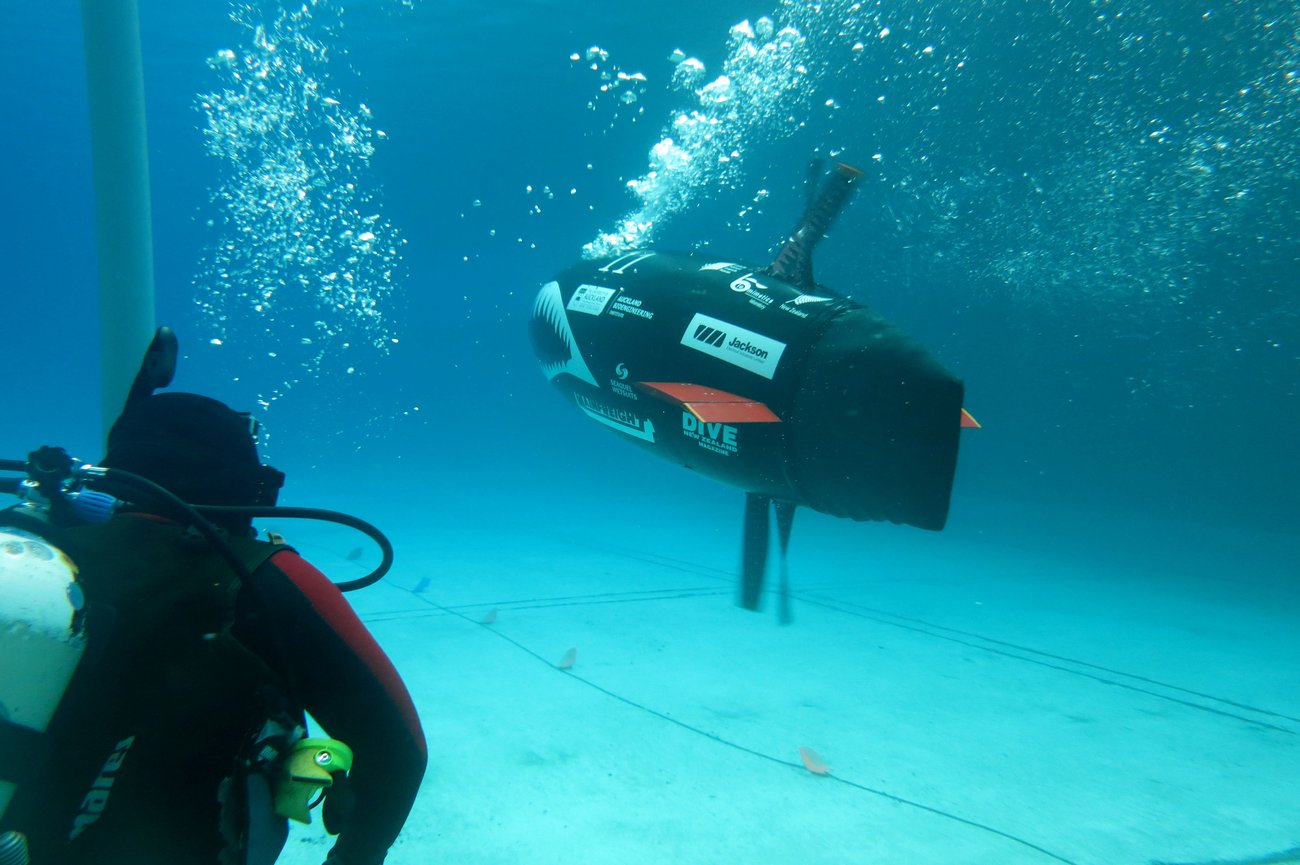
New Zealand has always been good at going fast. Above the water: our cyclists, long distance runners, even race car drivers are all amongst the best in the world. On the water: rowing and sailing, we’ve got the goods. Beneath the water? Well, we can claim that now as well. A group of five University of Auckland students and one professor have recently brought home the world title for human powered submarining.
The team consisted of associate professor Iain Anderson, Cristopher Walker, Ben Pocock, Sanjay Surendran, Gerrit Becker, and Koray Atalag. They recently competed in the week-long European International Subrace (eISR) held in Gosport, England.

Rear Admiral Philip Greenish CBE CEng FIET, Chris Walker, Iain Anderson, Stefan Jäger, Sanjay Surendren, Gerrit Becker, Ben Pocock. Photo courtesy of IMarEST (Institute of Marine Engineering, Science and Technology)
It’s not the first outing for the sub – aptly named Taniwha II – with its debut happening in the same event back in 2014. The event was a valuable lesson for the team and their sub that they described as “closer to a prototype than a polished racing machine.” Despite the unfinished machine the team won best non-propeller performance and received 7th place overall.
Fast forward – with a lot of hard work – to 2016 and the team have developed a fish-inspired propulsion system that was good enough to take out top honours at the eISR. The craft was pedalled to a near record-breaking speed of 4.7 knots. The current record is 4.9 knots.
The location for the event was the QinetiQ’s ocean basin facility – it’s the largest hydrodynamic testing tank in Europe and is used primarily to test models of ship hulls and submersibles. It’s often described as a football field underwater. Submarine football? Anyone?
Ten other teams from around the world competed of which three were non-propeller subs, including Taniwha II, with the others opting for propeller powered machines. Of the non-propeller powered subs, Taniwha II and one other were as good as their propeller powered counterparts, with New Zealand proving beyond doubt that it’s not all about having a propeller.
“I think it’s fair to say that fins are extremely viable as propulsion for submersibles – we’ve proven that fins are fast,” said Anderson.
The craft itself is loosely based on the Leatherjacket fish. The Leatherjacket has a fairly rigid body with fins located on the top and bottom of the rear of its body. So with a fin in mind the team used their engineering nous to modify two Mirage Drives – that are used for propelling kayaks – and placed one on top of the craft and one below.
While other subs had fins towards the rear of their crafts to manoeuvre, Taniwha stole used the tried and true ‘bendy tail’ design of the leatherjacket. The team developed a multi-segment rear body that is powered by a single hydraulic cylinder. The earlier incarnation of Taniwha was without said ‘bendy tail.’

The sub is a single person vehicle with the pilot – decked out in full scuba gear – lying on their front, pedalling to create forward motion, while using two hand levers to control left, right, up, and down. The system is similar to that seen on an aeroplane’s elevator.
The sub is yet to land back on New Zealand soil (no, it’s not travelling back via the depths of the ocean), but when it is the team will look at making improvements to prepare for two major events in the next two years. Firstly, a race in Maryland will take place next year which presents a different challenge to the recent competition in England.
“There’s a tank that is about a kilometre long – they actually had to take the curvature of the earth into account when building it. Essentially it’s a drag race where you go in a straight line as fast as you can, compared to England which had a slalom section,” said Anderson.
Beyond that, the team will head back to England for the 2018 eISR to defend their crown and attempt to break the world record for non-propeller, human-powered subs. If they haven’t broken it before then.




